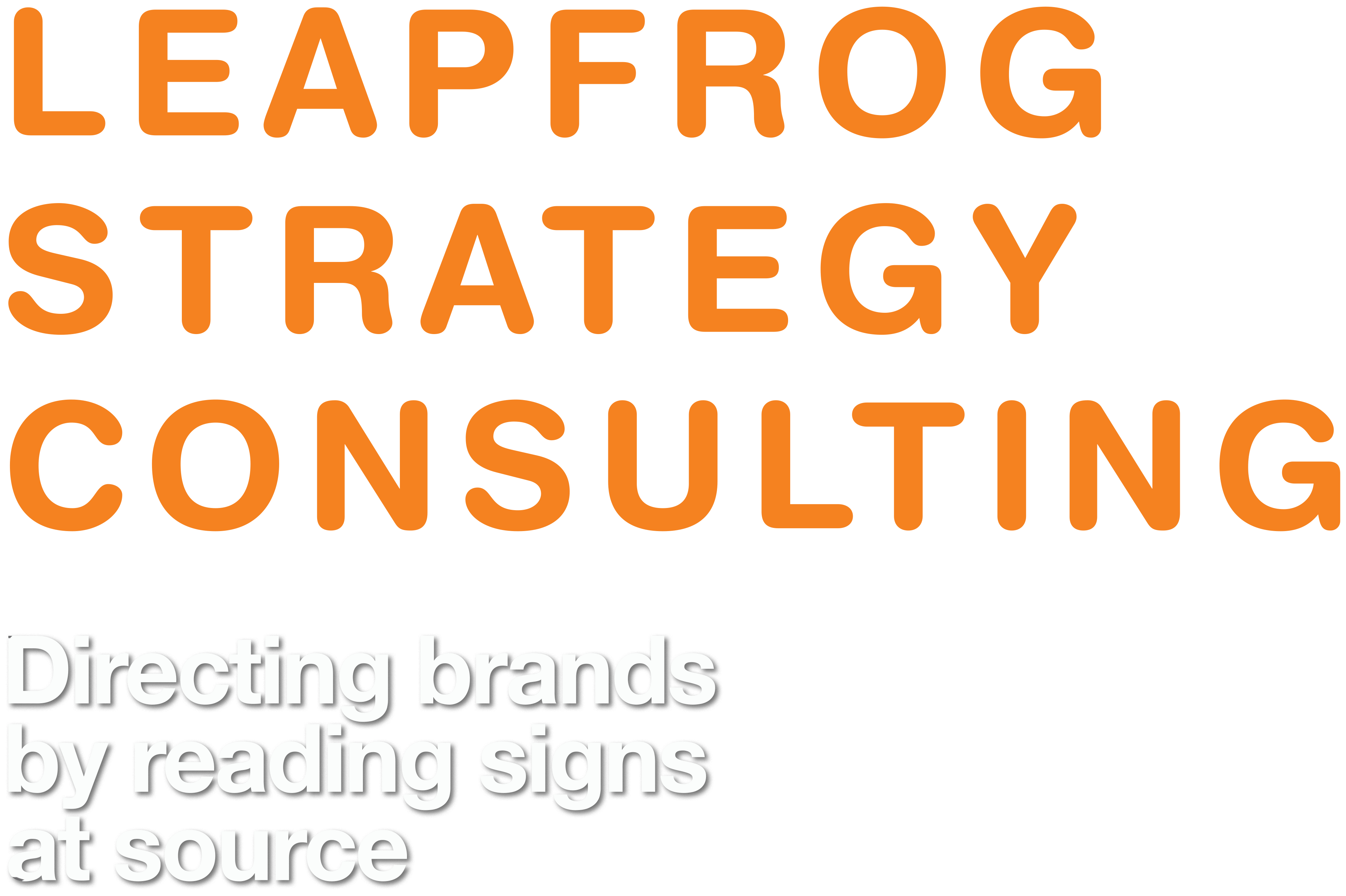The Meeting ground between Signs and Behavioural Science: Part 2
CS:  In the previous article, you had said that the meeting ground between signs and behavioural science needs to be considered separately and differently between closed and open environments. You had described how signs impact behaviour in closed environments. How should we think about signs in open environments?
In the previous article, you had said that the meeting ground between signs and behavioural science needs to be considered separately and differently between closed and open environments. You had described how signs impact behaviour in closed environments. How should we think about signs in open environments?
FT:  Influencing behaviour in open environments where people have choice, and are not constrained in any significant way from exercising their choice is a vast open field. It encompasses everything from giving people economic incentives (offers, promos, subsidies etc), persuasive communication (advertising), social recognition (rewards and awards), social competition (contests, exams), creating norms to align with and so on. The possibilities are too many, the options are several and figuring out the best approach or combination of approaches in any given situation or context is the task of a behavioural science team.
Influencing behaviour in open environments where people have choice, and are not constrained in any significant way from exercising their choice is a vast open field. It encompasses everything from giving people economic incentives (offers, promos, subsidies etc), persuasive communication (advertising), social recognition (rewards and awards), social competition (contests, exams), creating norms to align with and so on. The possibilities are too many, the options are several and figuring out the best approach or combination of approaches in any given situation or context is the task of a behavioural science team.
CS:  In the light of all these possibilities, is it right to think about Signs and behaviour or do we need to go beyond just Signs?
In the light of all these possibilities, is it right to think about Signs and behaviour or do we need to go beyond just Signs?
FT:  Your question is spot-on. In open environments, we need to go beyond just signs, to symbols and narratives as well. So, we need to consider the full set of semiotic phenomena, not just signs.
Your question is spot-on. In open environments, we need to go beyond just signs, to symbols and narratives as well. So, we need to consider the full set of semiotic phenomena, not just signs.
CS:  Is it possible to construct a simple framework that explores the intersection between semiotics and behavioural science in open environments?
Is it possible to construct a simple framework that explores the intersection between semiotics and behavioural science in open environments?
FT:  After giving the subject much thought, I have distilled a framework based on two intersecting axes. The first axis is that of emotion and cognition, drawing from the psychology of behaviour. It is a well-established axiom of psychology that we need to activate emotion to get people to DO something. If emotions are not activated, people don’t DO anything, even if they cognitively understand what is being said or read or heard. We can easily verify this through our common sense experience. We know that daily exercise is good for our long-term health, but we don’t often do it. When the moment to exercise comes, we find a reason to not do it and then it is too late for that day. And so it goes…
After giving the subject much thought, I have distilled a framework based on two intersecting axes. The first axis is that of emotion and cognition, drawing from the psychology of behaviour. It is a well-established axiom of psychology that we need to activate emotion to get people to DO something. If emotions are not activated, people don’t DO anything, even if they cognitively understand what is being said or read or heard. We can easily verify this through our common sense experience. We know that daily exercise is good for our long-term health, but we don’t often do it. When the moment to exercise comes, we find a reason to not do it and then it is too late for that day. And so it goes…
The second axis is that of the Individual and the Collective. Is the aim to impact people individually? Or as a group or collective, taking into account socio-cultural aspects?
Thus we can arrive at four quadrants – individual cognition, individual emotion, shared cognition and shared emotions. The choice is with the behavioural scientist team as to how they wish to impact people (or consumers for marketing), in one of these four ways.
CS:  Could you give some examples of where and how Semiotics interfaces with behaviour in each of these quadrants?
Could you give some examples of where and how Semiotics interfaces with behaviour in each of these quadrants?
FT:  Emotion is activated in individuals and groups through different kinds of semiotic phenomena. The first is the visual image. A visual image has the power to activate emotions depending upon the way it is created. Visual images can have visceral effects upon the reader / viewer, both positive (attraction) and negative (repulsion). As a general principle, I would say, from experience, that photo-real images, that come closest to lived experience or perceptions of lived experience are more impactful in activating behaviour than graphics, drawings and abstract representations. Let’s compare a few images. Pick the ones that activate emotions over those that don’t.
Emotion is activated in individuals and groups through different kinds of semiotic phenomena. The first is the visual image. A visual image has the power to activate emotions depending upon the way it is created. Visual images can have visceral effects upon the reader / viewer, both positive (attraction) and negative (repulsion). As a general principle, I would say, from experience, that photo-real images, that come closest to lived experience or perceptions of lived experience are more impactful in activating behaviour than graphics, drawings and abstract representations. Let’s compare a few images. Pick the ones that activate emotions over those that don’t.



The second is the verbal rhetoric, using words that carry an emotional punch vs. words that lack that punch. The writers of clickbait titles on internet platforms, newspaper headlines, advertising headlines, politicians, great public speakers etc know the power of verbal rhetoric and how to use words that pack a punch, to draw responses.
CS:  I got that, the importance of emotions for activating action and how that is addressed in communications of various kinds. Could you explain the difference between behavioural scientists addressing individual and collective behaviour?
I got that, the importance of emotions for activating action and how that is addressed in communications of various kinds. Could you explain the difference between behavioural scientists addressing individual and collective behaviour?
FT:  Advertisers and marketers, mostly address consumers as individuals and not as groups. Ads are aired, intended to be viewed individually, by consumers and thus impact their purchase behaviour and choices at an individual level. Individual consumers are not expected to have a shared identity in relation to the brand, nor are they expected to take collective action as a group.
Advertisers and marketers, mostly address consumers as individuals and not as groups. Ads are aired, intended to be viewed individually, by consumers and thus impact their purchase behaviour and choices at an individual level. Individual consumers are not expected to have a shared identity in relation to the brand, nor are they expected to take collective action as a group.
Whereas, political leaders address citizens as groups when they speak at election rallies and other rallies. They expect voters to assume political identities as supporters of parties. Ideally, they would also like voters to vote as a bloc for the party’s candidate, exhibiting collective action as a group.
Today, Influencers, when they make videos on You Tube and share their viewpoints and recommendations are addressing audiences as individuals and as a community of followers. Audiences accept a shared identity as followers of the Influencer, while still listening to the Influencer at an individual level. If the Influencer turns into an Activist or enters politics, he/she would like his/her followers to also exhibit collective action as a group.
CS:  You have mentioned cognition as different from emotion. Could you elaborate further?
You have mentioned cognition as different from emotion. Could you elaborate further?
FT:  Emotions and feelings we all understand, they include such phenomena as anger, sadness, fear, guilt, shame, worry, anxiety and so on. Cognition is all about the conceptual architecture in the mind through which we interpret and make sense of the world in which we live. Language shapes our cognition in a very fundamental way. But there can also be non-verbal, non-articulated cognitions based on sensing alone, without labelling with words.
Emotions and feelings we all understand, they include such phenomena as anger, sadness, fear, guilt, shame, worry, anxiety and so on. Cognition is all about the conceptual architecture in the mind through which we interpret and make sense of the world in which we live. Language shapes our cognition in a very fundamental way. But there can also be non-verbal, non-articulated cognitions based on sensing alone, without labelling with words.
CS:  So, where is the meeting ground between semiotics, cognition and behavioural science?
So, where is the meeting ground between semiotics, cognition and behavioural science?
FT:  There are two overlapping disciplines – cognitive linguistics and cognitive psychology through which we find the meeting ground between semiotics and behavioural science. Some of the common technical concepts of cognition are shared between semiotics and behavioural science. Cognitive linguistics has identified concepts such as mental encyclopaedias vs. dictionaries for meaning making, classification and categorization processes using prototypes, interpretive processes featuring domains, frames and schema. Other language based constructs of meaning making are binaries, oppositions, metaphors, metonyms and other figures of speech. Framing is a common concept shared by semiotics and behavioural science.
There are two overlapping disciplines – cognitive linguistics and cognitive psychology through which we find the meeting ground between semiotics and behavioural science. Some of the common technical concepts of cognition are shared between semiotics and behavioural science. Cognitive linguistics has identified concepts such as mental encyclopaedias vs. dictionaries for meaning making, classification and categorization processes using prototypes, interpretive processes featuring domains, frames and schema. Other language based constructs of meaning making are binaries, oppositions, metaphors, metonyms and other figures of speech. Framing is a common concept shared by semiotics and behavioural science.
I know that I am throwing a lot of technical terminology or jargon here, without explaining each term, but my aim is only to point you, the reader in the direction of a book on cognitive linguistics, if you should wish to go more deeply into the subject of human cognition.
CS:  I always thought of semiotics as cultural intelligence. Doesn’t culture impact behaviour? Where does culture enter the picture?
I always thought of semiotics as cultural intelligence. Doesn’t culture impact behaviour? Where does culture enter the picture?
FT:  Culture lies at the foundation of cognition of both visual and verbal language as well as social practices and how they are to be interpreted. All cognitive phenomena at their foundation are cultural and contextual phenomena. Never-the-less, when there is common ground and a ‘perception’ of universality, the cultural aspect fades into the background. Culture impacts both individual and collective behaviour. Every individual in this world is raised as a member of a culture. Every child born in this world, is born into a community and is raised and acculturated as a member of the community.
Culture lies at the foundation of cognition of both visual and verbal language as well as social practices and how they are to be interpreted. All cognitive phenomena at their foundation are cultural and contextual phenomena. Never-the-less, when there is common ground and a ‘perception’ of universality, the cultural aspect fades into the background. Culture impacts both individual and collective behaviour. Every individual in this world is raised as a member of a culture. Every child born in this world, is born into a community and is raised and acculturated as a member of the community.
For e.g. at the closing ceremony of the Football World Cup in Qatar this year, the Emir of Qatar wrapped a black robe or Bisht on Lionel Messi as a mark of respect and honour for his achievements, when the Argentina team lifted the World Cup. The meaning of the black robe, its significance is known to all Arabs, but not to non-Arabs. Non-Arabs wouldn’t have the same cognition of the black robe as Arabs, because they don’t share the same mental software for interpreting both the object and the practice. Hence, on social media, there were a segment of Western viewers who interpreted the act negatively, as disrespect to Messi and the team and criticized it.

CS: Could you tie in all these concepts and frameworks into a single illustrative example, so that it lands for me? And other readers like me?
Could you tie in all these concepts and frameworks into a single illustrative example, so that it lands for me? And other readers like me?
FT: So, I was waiting at the lift to go up to my office on the 10th floor. Just next to the lift were two simple posters informing and encouraging people to use the stairs in order to improve their health. Here are pictures of the posters.
So, I was waiting at the lift to go up to my office on the 10th floor. Just next to the lift were two simple posters informing and encouraging people to use the stairs in order to improve their health. Here are pictures of the posters.
Yet, I saw people crowding around the lift doors, I didn’t find a single person walking up the stairs. When the lift has stopped between floors, while going down, I have found people walking down from the 4th floor to the ground floor. But the same people, wouldn’t walk up four floors. They would wait for an empty lift to get into. Let’s say that this is the challenge for the team of semioticians and behavioural scientists to address with their respective disciplines.
They need to get many more people (say 50%) of office goers to take the stairs to go up and down from their offices to the ground floor, instead of taking the lift. The management of the business park are genuinely committed to making office goers at their centre, improve their health, hence the goal and the willingness to invest behind the effort.
As a Semiotician team, here is how we would approach the analysis.
- We would try to map the Semioscape around weight loss and weight gain, fitness and good health, what are the meanings connected with these terms, the signs, symbols and narratives used. This would be based on a study of fitness apps, websites, social media content out there. We would study and decode consumer SURROUND, not consumer voice. That is, we wouldn’t be interviewing consumers. We might ask office goers to give us a list of their “go-to” spaces online with regards to weight gain/loss, fitness and good health.
- In particular, we would try to identify the most emotionally compelling visuals and rhetoric, including domains, frames, binaries and expressions using metaphors, metonyms etc.
- At the moment of decision-choice, viz, in front of the lift, we would design posters and other reminder formats based on the emotionally compelling visuals and rhetoric.
- The Behavioural Science team would interview lift users to better understand their habits and their resistances including biases, to stairway climbing.
- We would work with the behavioural science team to design other types of interventions to help people overcome their momentary resistance in order to cultivate a new habit. These could be aimed at individuals, groups of users and also try to leverage cultural insight about Indians’ relationship with their body and body weight, fitness and good health.
CS:  Thank you, this has been a very enlightening discussion.
Thank you, this has been a very enlightening discussion.

